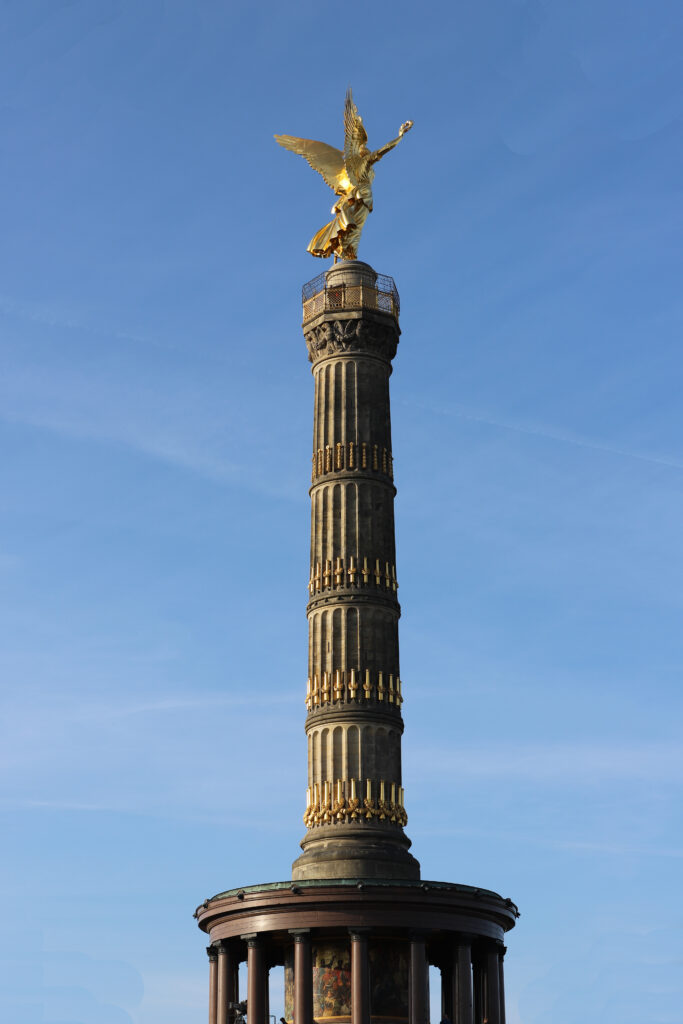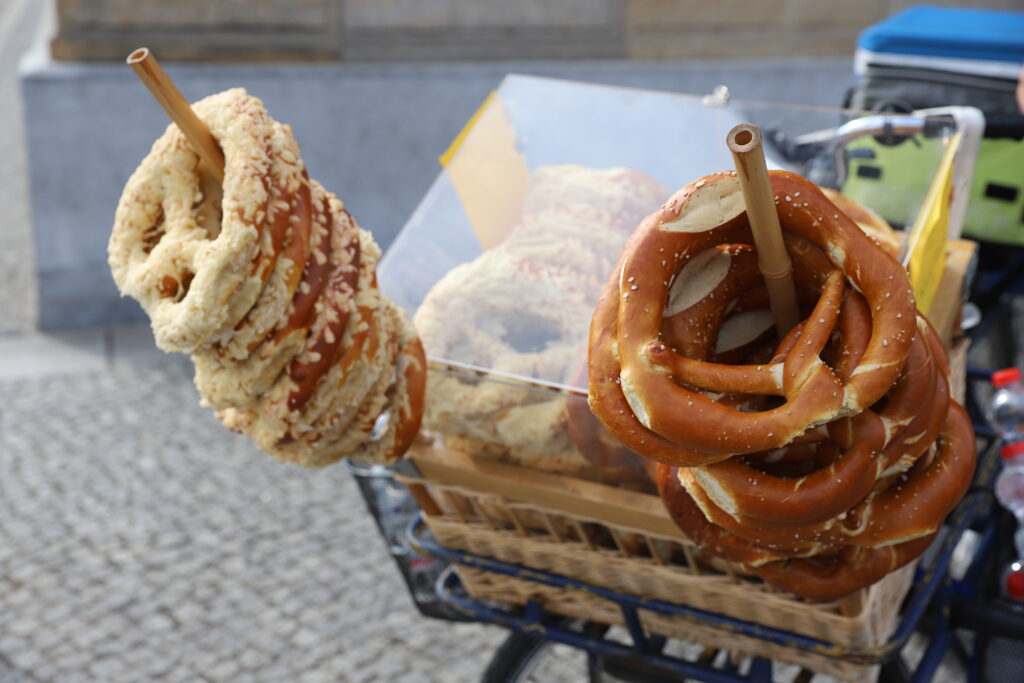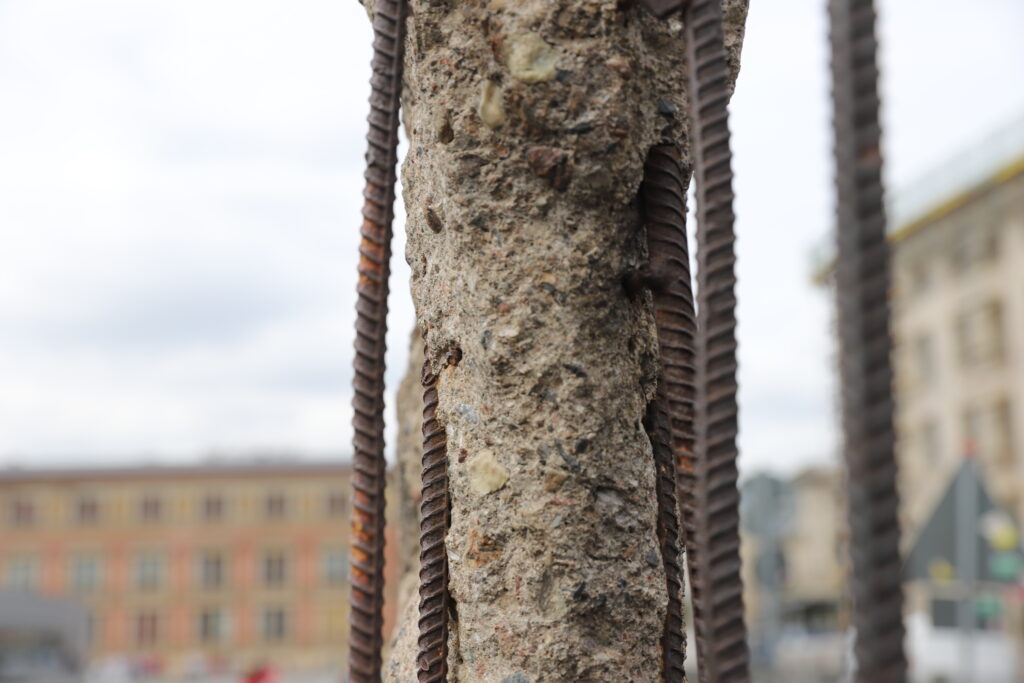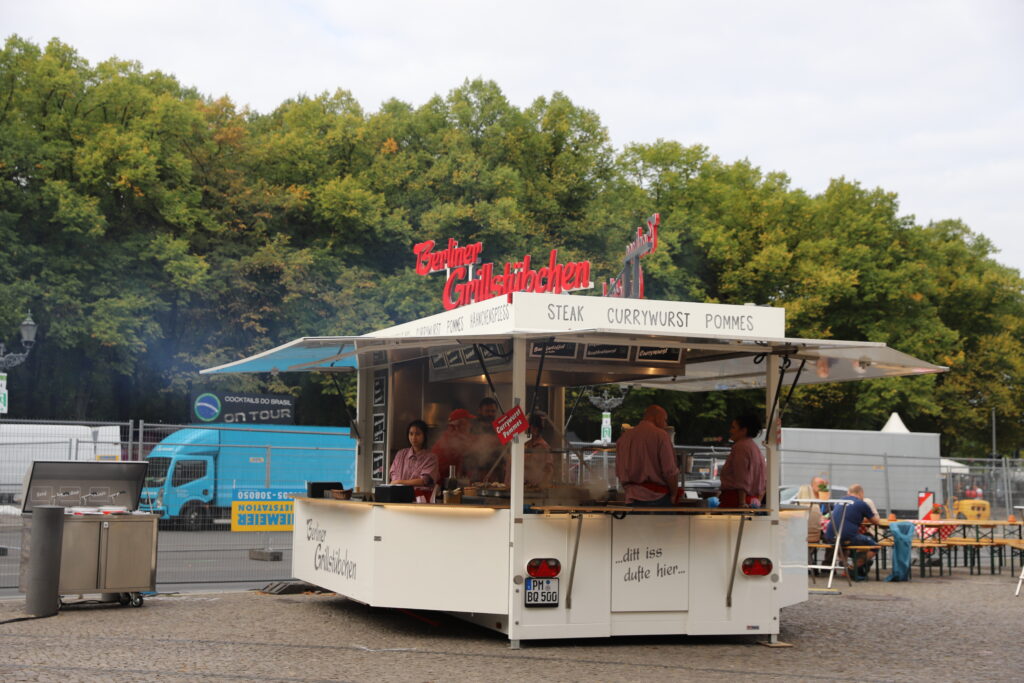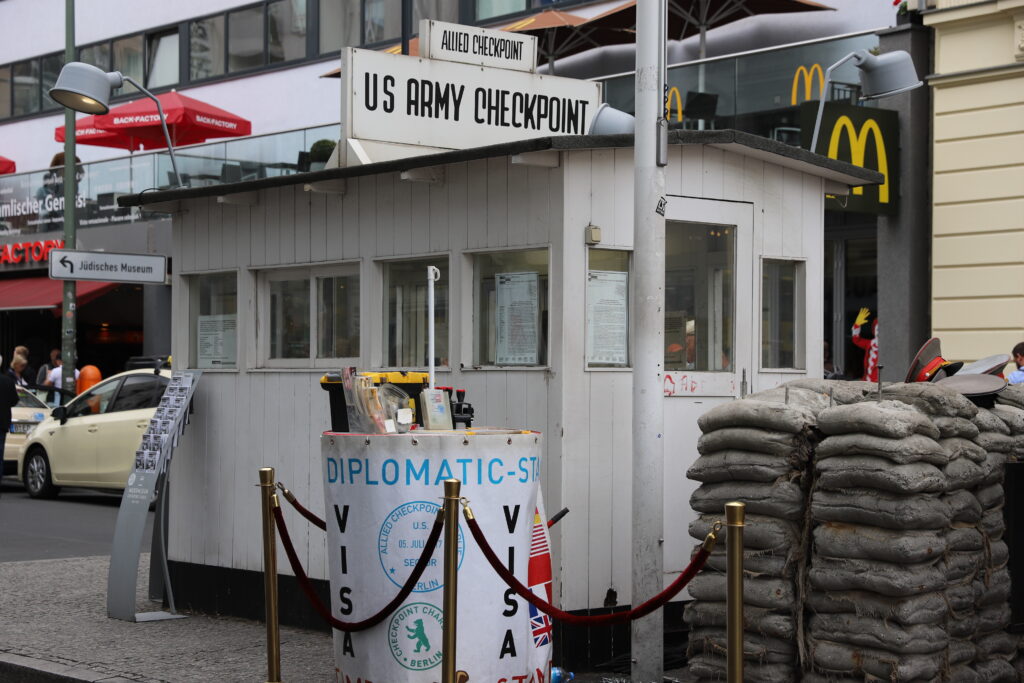
Berlin Marathon: A Spectator Point of View
Marathon spectating takes many forms. Some people like to drop their runner off at the start line and go for breakfast, coffee and lunch before watching their runner cross the finish line. My preference is to see how many times I can see my runner during the course. This can be tricky and comes with the risk of completely missing your runner (I will tell you about that another time). Fortunately, the Berlin marathon is great for both styles of spectators.

The Berlin marathon course is relatively easy for spectating. If you like to move around, there is excellent public transportation to nearly every part of the course.
Between the Victory Column and the Brandenburg Gate, the challenge is narrowing down where you plan to go. My runner is pretty consistent in his running, so that helps with my planning quite a bit and lets me adjust my plan as I go. What I didn’t take into account for the Berlin marathon was that all of the signage and the spectator pace information is in kilometers. When my initial spectating plan was derailed after the second stop, it was a real challenge to adjust on the fly from my minutes per mile mindset. I ended up seeing my runner four times over the 42 km course. I was hoping for a couple of more times, but I didn’t want to miss seeing him run through the historic Brandenburg Gate just before heading to the finish line. What an incredible way to finish a world major marathon.
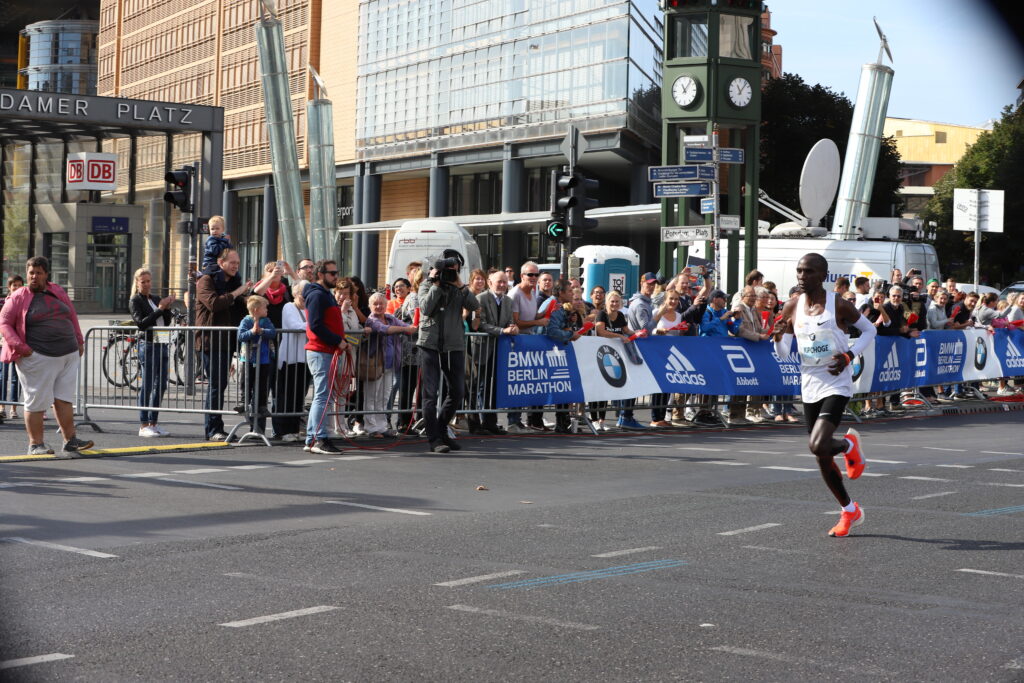
Eliud Kipchoge set the world record the year we were in Berlin. I saw him just after the halfway point at Potsdamer Platz. I didn’t know he was on pace to set a world record, but it was pretty obvious he was the fastest man on the course!

One of the very cool experiences accompanying the marathon was the opportunity to participate in a 6K the Saturday before the race. I am not a runner, but the opportunity to finish in the Olympiastadion where the 1936 Olympics were held was irresistible. Approaching the stadium where Jessie Owens won four gold medals was an unforgettable experience. We entered the stadium as the 1936 Olympic athletes did, winding through a tunnel from athlete village to the field. There were drummers in the tunnel. The near-deafening reverberations from the drums built excitement levels as we approached the entrance to the track. It was easy to imagine being an Olympic athlete during that moment in time.
There was so much history to soak up in Berlin. We enjoyed Currywurst at an outdoor cafe, giant pretzels from a vendor on a bicycle and there was quite possibly some German beer involved after the marathon. Seeing Checkpoint Charlie and walking the line where the Berlin Wall once divided the city was very sobering. The Brandenburg Gate at sunset was magnificent.
There is more to the Berlin marathon than running. Enjoy the journey!



